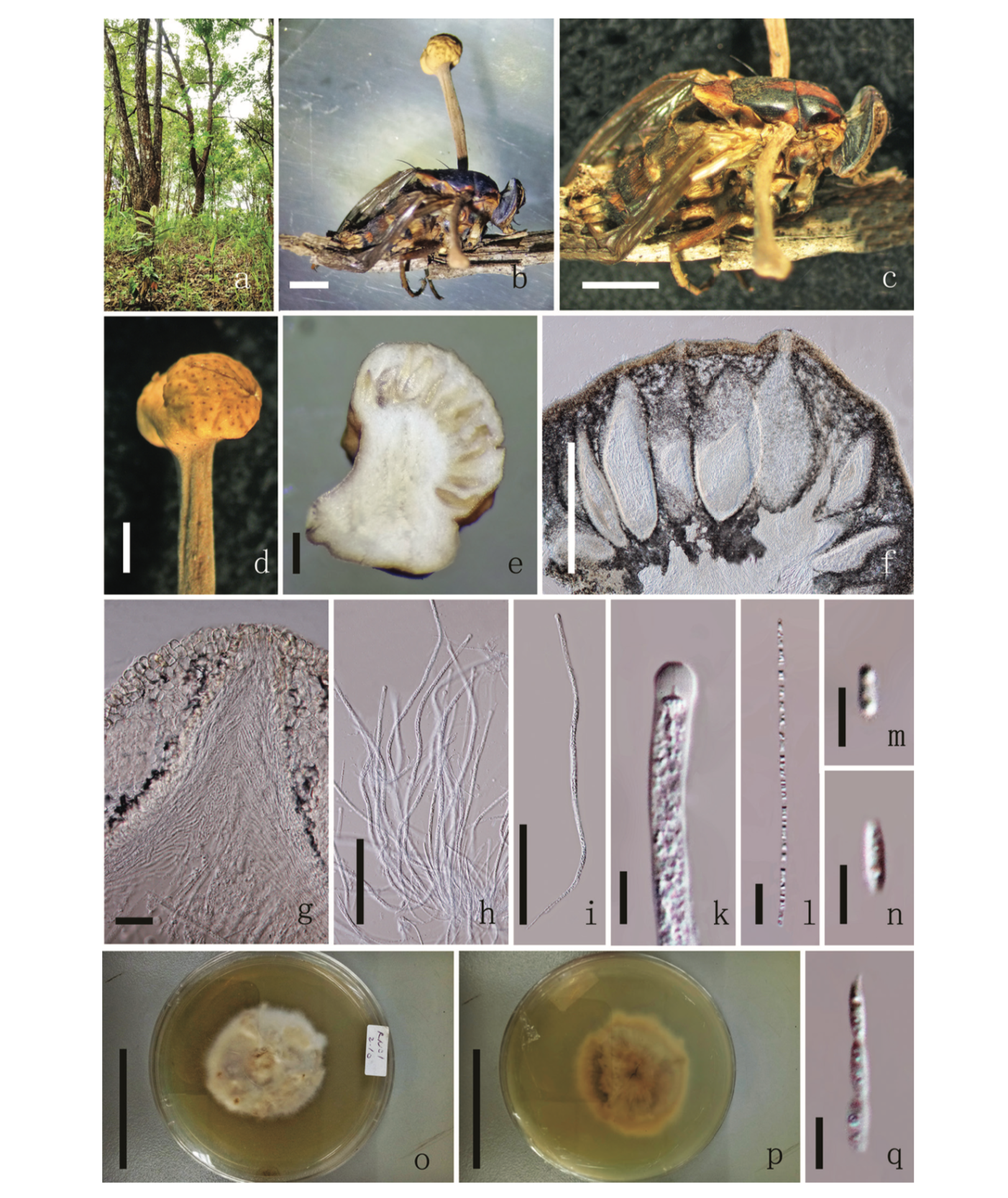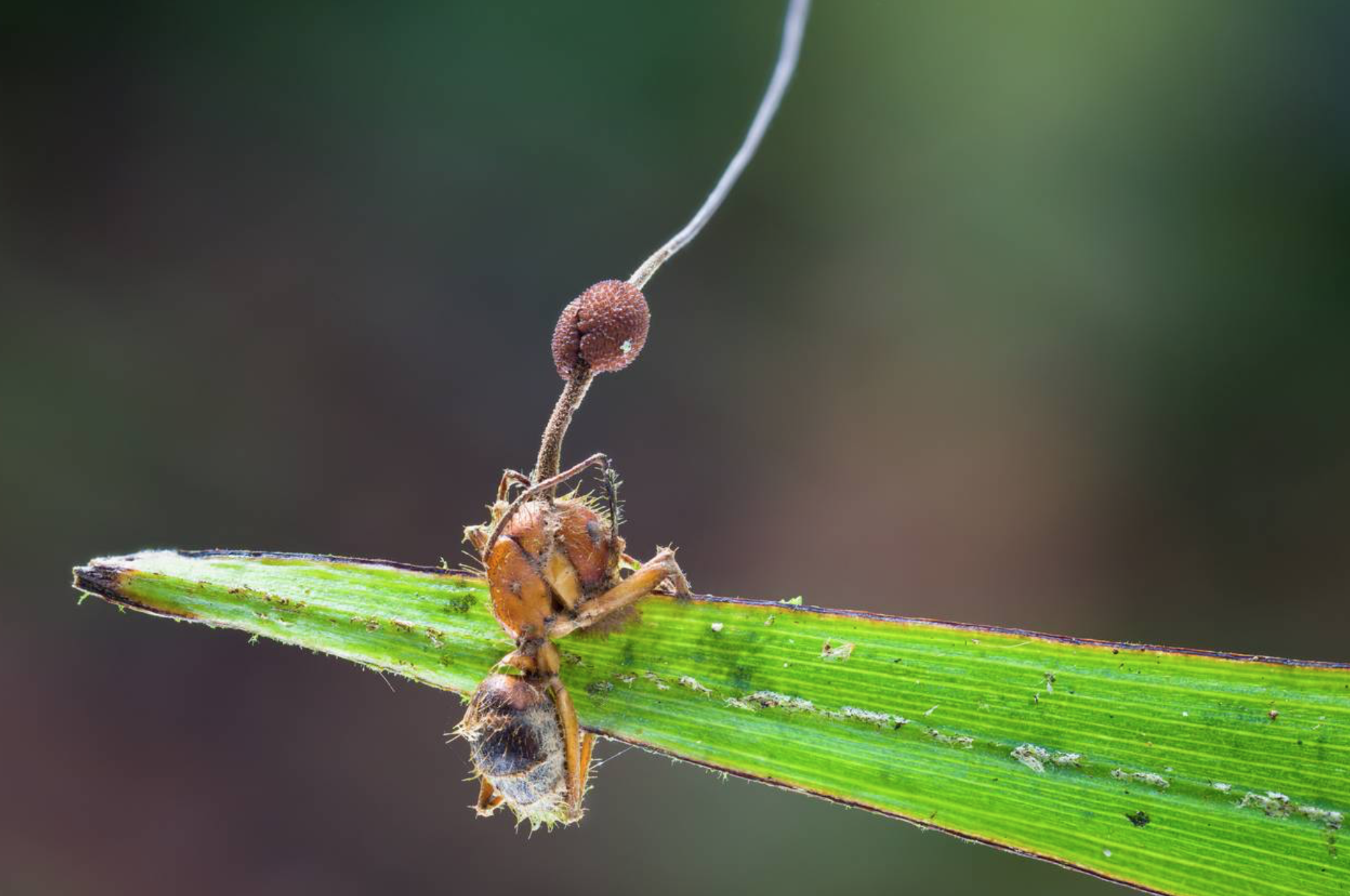In the rainforests of Thailand, these two newly described parasites enhance biodiversity. Specialized parasites around the world level the playing field, allowing less dominant organisms to gain an ecological foothold. Parasites that reduce voracious herbivores allow higher levels of primary productivity which ultimately leads to more energy entering the system. By altering bottom-up processes through top-down control, these newly described fungal parasites promote biodiversity.
Read moreNew fungal species found in Thailand: Parasitic fungi promote biodiversity
Ophiocordyceps globiceps a Habitat b Ascostroma emerging from infected fly c Host d Fertile head of ascostroma e Vertical section of the stroma f Section of ascomata g Peridium h, i Asci k Apical cap of asci l, q Part of ascospore m, n Secondary ascospores o Upper side of the culture p Reverse side of the culture. Scale bars: 1000 µm (b–d), 500 µm (e, f), 100 µm (h, i), 20 µm (g), 10 µm (k, l), 5 µm (m, n, q), 5 cm (o, p). From Xiao et al. 2019.



